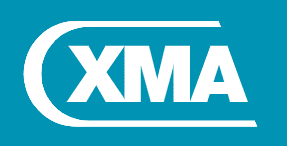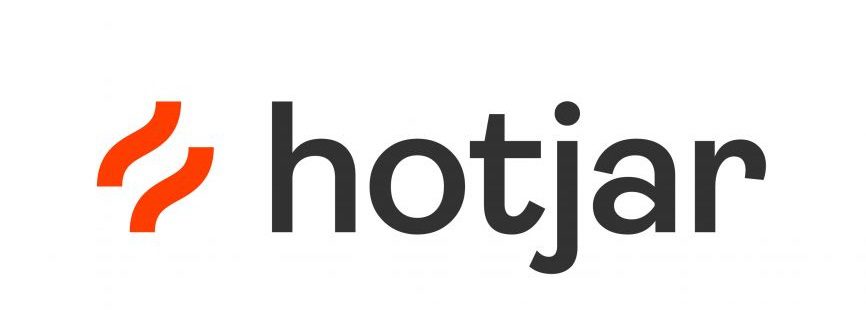Barnaby: Hello and welcome, everyone, to today’s episode of XMA Plug-In. I’m very happy to be here today. My name is Barnaby and I’m going to be your host. The topic of today’s podcast is IT as a service: consumers expecting more.
Today we will be talking about what IT as a service means and why organisations are recognising a much wider need for IT services. Most of our listeners will know that since the 14th of January, Windows 7 has gone end of support and many organisations have been through a device refresh in preparation for the movement to Windows 10. With this migration, we’ve seen more than ever all types of organisations from both the private and public sectors adopting the IT as a service model. But what does this model really look like and how can this benefit your business? Well, to explain it all to us, I’m joined by Ryan Walker from HP, who is an HP services lead. Hello, Ryan.
Ryan: Morning Barnaby.
Barnaby: Morning! To begin Ryan. Can you give us a brief overview of what Device as a Service is and how it’s come about?
Ryan: Yes, certainly Barnaby, so device is a service for HP has been around for about the last two, two and a half years. Fundamentally, we’re trying to obviously shift a transition in our business away from, you know, the traditional transactional model of business to more ‘as a service’ like many other manufacturers in the industry. And therefore, you know, why should end user compute and P.C. technology be any different to software as a service or infrastructure as a service?
Barnaby: Excellent. So how have you seen that change be driven? Is it from a the consumer demand, or something which has happened in the consumer market?
Ryan: Primarily we’re seeing a lot of customers kind of moving away from the traditional CapEx mode of operation into more of an OpEx mode of operation operational expenditure mode, because actually why could you not treat and induce a compute device like you would do a mobile phone contract or a company car scheme to that ilk because, you know, you can still budget and plan for it in the same ways, in the same fashion from that side of things.
Barnaby: Excellent, so I assume then that the customers will use the devices for three, maybe five years at most. So, have you seen more customers become more aware of their carbon footprint on the industry and also on the planet and how they become more aware of what happens with the device when it leaves such as the recycling of a device?
Ryan: So many customers, I guess, traditionally in the Windows 7 environment, have traditionally kind of sweat at those assets for, you know, three, four, five years, as you’ve alluded to. And they’ve obviously deployed those devices and haven’t really needed to touch them previously. But with obviously the new advent of Windows 10 and most customers are now moved to Windows 10, thankfully.
But I still think there’s 25 or 30 percent of the industry still on Windows 7.
Then, you know, there’s a lot of changes with Windows 7 around the security side of things. And customers need to be more security conscious for nowadays. You know, there’s a lot of news and a lot of companies in the press for the wrong reasons recently around having security breaches and threats and ransomware attacks and things like that. So actually being able to, you know, look at that Windows 10 environment and being more conscious from an end user point of view of the fact that you need to secure and patch that operating system far more frequently now with Windows 10 than probably what you did in the past, Windows 7 just means some of those kind of changes in the industry are happening quite quickly. And obviously in a when we’re going into that conversation with customers around that whole transition to Windows 10, it’s a good opportunity for us to discuss the device as a service and how we can bring other technologies and other software automation tools to bear to save costs and operational expenditure for those customers.
Barnaby: So you’ve just touched there on how the use of all or the new deployment, Windows 10 has allowed you to have more conversation around services with customers. What kind of a what kind of diversification of services have you seen within the industry following the demand from the customers?
Ryan: A lot of a lot of automation can be done from Microsoft tool sets. Generally speaking, say, when we were engaged with the client, you know, long gone are the days where they start imaging those devices, then get into I.T. and then put in some, you know, custom settings on those devices. You know, a lot of that in the past has taken, you know, on average probably half a day to a day of an engineer or consultants, time to build that traditional windows P.C.
So, nowadays obviously has a lot of software automation tools from Microsoft, things like Microsoft Intune as a mobile device management tool, as well as Microsoft auto pilot. We can start configuring some of the customers. You know, standard image builds a factory ready to have that kind of out of the box experience for the end user so that, you know, when they get that new P.C. or that new laptop device, they can literally plug it in. Yeah. Download their custom profiles, their applications and they’re off and ready straight away. So actually using some of these software deployment tools, we’re cutting down a lot of the time for I.T. but also making it far more, I guess, consumer focused and consumer friendly, I guess, for the for the end user and that client experience.
Barnaby: Excellent. So you just touched on something there, you mentioned they say they would spend days of time to make the customer image and make sure that the device is ready to go out to the end users. And that’s kind of now, It’s not it’s not gone away that that still happens a fair bit. But the need for that has shrunk. So from that, you’ve also got a shift as well of more people working from home, from home, more people working for maybe different countries as well.
How have you seen a shift in help desks and support for the devices that our customers deploy to their organizations as we see the shift to people who work from anywhere that they like? And how has that impacted this shift, if you like?
Ryan: So, you know, the advent of, I guess, mobility has been around for years, as we all can recognise. However, I think customers are on that journey now, starting to build out their workplace services strategy and what that could look like. So obviously, we’re at the early stages where we’re trying to obviously educate customers around some of the deployment tools, you know? Long gone are the days where you need to have on premise solutions.
You can put pretty much everything, applications in the cloud, you know, move to Azure active directory with Microsoft as a starting point so that when we start putting everything in all of the infrastructure in the cloud, the applications in the cloud, it makes it far easier for us to then start deploying those applications to those devices far easier than they have done in the past. So that’ll be one way that we’re looking at it.
I guess the other way that we look at it with HP, with our TechPulse analytical cloud based solution is actually we’re able to then link in those analytical tools and that big data into other back end I.T. service management platforms, things like service now would be one area that we’re looking at at the moment and we have already out the box ready to go off the shelf kind of solutions. So my point being is we can actually take the TechPulse analytics reports and the data and the security from those reports and start feeding them into helpdesk platforms. And by doing that, we’re starting to automate that software level between the analytical data and the I.T. service management and help this platform. So that starts to drive down operational costs because we can actually use software tools now to start automating all of those areas and create in those incidents and seeing those incidents. So, you know, we’re starting to save customers in the region of 25, 30 percent year on year. At help desk level through those software automation tools.
Barnaby: And with those tools you mentioned there that you’ve just devised or not just devised, made a product called TechPulse, which is part of your DaaS offering. So that’s come from a change in the industry and a shift with customer expectations. So how does TechPulse help customers with people who are out in the field who may not be in the office every or for months at a time or weeks, you know?
Ryan: Yeah. So, HP TechPulse is there really to help customers start to take I guess, take count of what they’ve got to start with, because many customers don’t actually know where their assets are or who owns that asset. Lots of customers have lost assets at the end of the day. So one of the areas that we do to start with is obviously identify those assets for customers first and foremost. Equally with the TechPulse analytic tool, we can actually see how that individual user is using their device, how productive they are, whether they need a mobile device based upon geo location services and how frequently they’re out the office or out on customer site, things of that nature, Barnaby, Equally from there we can start to kind of build a picture and a profile or a persona for those individuals, those remote workers. So once you start to build that user persona, we can then start identifying what is the right device within our portfolio that fits that user persona. And once we’ve done that, we can quite easily then attribute a monthly cost model to that individual user persona in the device that they use. So we can start to get far more accurate around that data and around that cost model and that OpEx cost model for that customer.
Equally, you’re always find that probably kind of 75, 80 percent of customers will have what I’m going to call a vanilla box, kind of an i5 and i7 with 8GB RAM to run Windows 10 and that’s fine for most mobile users and things like that. But equally, the other 10 or 20 percent will be a little bit more bespoke. So they may well be running high end graphics based applications, CAD CAM engineering applications, if you look at HP, our research and development team, our marketing team, our data analytics team. They will need a slightly higher powerful machine them than the vanilla box that we’re going to give to a mobile user like myself. So it’s trying to understand who those users are and then providing them with a slightly better machine than maybe they need a 16gb ram, maybe they need dedicated graphics. So, you know, we can give the power to those users that genuinely need it to run the applications that they run, and they’ll have a slightly different spec machine or a higher, different model. And therefore they have a slightly different higher price point and user is a monthly fee kind of thing that goes with them.
Barnaby: But then on the flip side of that, I guess you can also see when a user comes to you and they say, I need this high spec device, it’s got a graphics card and high specked ram and also storage. You can see as the as the I.T. manages, how much of that high spec device that you’ve spent thousands on for them. And actually they may not be using all of it to its full capacity. Whereas as someone over and in the in the media department maybe who’s on a standard device that’s under specked for their job, and you can kind of see that there’s a person over here who is using a device that they’re barely using its capabilities, whereas you got another person on the other side and in the media department and they’re using a device that that they’ve bought because that was what was what was personified for them. And they’re absolutely stretching it to way beyond its limits. I guess it is also helping customers make the most out of their investments. They can move devices around their estate and make sure that they’re making the most from what they have bought.
Ryan: Exactly to that point. And part of that analytic solution, the HP TechPulse agent, customers really are to see that data, who’s over utilising that device, who’s under-utilising that device, what software applications are drawing all of the, you know, all of the power and the throughput from that device. So actually you can start to repurpose those devices and provide those devices, you know, empower people where they need that power and they need that capability to make them obviously as most productive as possible, because that’s the ultimate end game from all of this.
Barnaby: On another note, just what you touched earlier on is the change from Windows 7 to Windows 10. And now the Windows 7 has gone end of life. And in your opinion, how have you seen these security offerings from the different vendors out there change in response to the security threats that are thrown at our customers on a day to day basis you know, with these zero day attacks that are now happening.
How have you seen the security offerings develop in response to those kinds of threats that are now emerging daily, almost?
Ryan: HP has always been very proactive around security. We look at security as a multi factor authentication as many customers and many vendors do as well. So it’s not a case of a one size fits all for customers. They need multiple layers of security. So within the HP product portfolio, when you look at our elite products, say the premium class product, desktop and laptop products, we have a full suite of security software ranging from HP sure start, which is a BIOS level security solution, right through to things like HP sure recover, which helps customers re-image those devices within as little as like five minutes that you can create a network partition on the actual device. And therefore if you need to re-image that device instead of it taking four or five hours back at I.T. customers and I.T. departments and individuals can start re-image in their device themselves. Within there’s less than five minutes.
So it’s saving a huge amount of time and effort re-imaging in that device. Equally, we go through to the levels of HP Sure View, which is the privacy screen filter you can have built in to your laptops. It stops people shoulder surfing, whether that’s, you know, you working in a coffee shop, on a plane, on a train, whatever it might be. Having that privacy screen filter can be quite a useful solution. And equally, we can then link that privacy screen back to applications.
So if you’ve got people in HR as an example that open up a, you know, very sensitive information on personnel, it seems aimed and that HR application, the privacy screen filter will kick in so we can tailor that privacy screen to applications as well, which is quite, quite crucial element for somebody in a HR role and purpose, I guess.
Equally, we do other areas, we do other solutions, so we’ve just acquired a company called Bromium. So with Bromium, every time once you’ve installed the sure click agent onto your laptop or mobile device, basically every time you open up a Internet Explorer application or a web browser or if you’re opening up a file attachment you’ve received from somebody on the email, it opens it up all under a virtual machine, not the actual physical machine. So it’s a sandbox installation or a containerisation solution. So what this does is simply every time you go to a web browser up in a virtual machine, unbeknown to the user, within .2 milliseconds of opening up that web browser and equally, again, using the HR solution, you can imagine that people in HR are getting CV’s daily weekly from people that are untrusted.
Well, how do they know if it’s not ransomware or attack in that fire or some malicious malware in that file attachment?
Again, if these files are opened up on a virtual machine as opposed to their physical machine, then it’s far more secure. And therefore, every time that application, that web browser is closed, it’s closed on the virtual machine and it just disappears. There’s no intrusion to the actual customer. There’s no way of getting onto the actual customer’s infrastructure as well as their actual device. So there’s a whole suite of software and security solutions HP provides free of charge under our Elite Book product. I guess the challenge that we have largely speaking is, is I guess educating those customers when it’s pre-configured on those devices to actually stop blowing away all of the standard factory build and making sure that security solution is baked into their hard image build at that point of purchase.
Barnaby: But then equally, you’ve got tools that help with that as well. So, you know, there are loads of customers that will take an HP device that has all of its value that you just explained on it, and then I’ll just wipe it with a vanilla image.
So are you able to talk a bit about HP Image Assistant and how that can help customers make the most from the investment that they’ve made in their estate?
Ryan: Yes, again, to my point is when the customer’s buying that new device, we need to work very closely with the end user customer and with you in the channel to make sure that the HP security software that’s preloaded on those devices is not immediately wiped. But that’s the first port of call. That’s what the emphasis and the message that I’m relaying is don’t wipe all of the security software that’s free on those devices actually build in as your security proposition. You know, it’s not going to replace that a Microsoft Windows defender or Symantec anti-virus or whatever it would be.
We’re not suggesting that. What we’re suggesting is it’s a multi layer of security and therefore, have a look at these products, understand the products and the capabilities that the HP Sure Security range offers and then build that into your overall security proposition.
Barnaby: Excellent. Following that message of security and the transmission, that everybody’s kind of done over the last 12, 18, 24 months to Windows 10 from Windows 7 or maybe Windows 8 – How do you predict that these service led expectations and security offerings would develop into into 2020? And also will become more at the forefront of customer minds as well?
Ryan: Within the journey that we’re taking customers on – Why would you move to device as a service instead of a traditional transactional type hardware refresh?
Device as a service can be many things to many vendors and many partners and many end users, so we’re trying to educate customers around the benefits of device as a service could be many different areas. It could be purely looking at from a cost model perspective. You know, generally speaking, from my experience, if you put a device over a three year contract, there’s broadly speaking residual value in the hardware after that three year period. So that residual value of hardware can often then offset the cost of some of this clever cloud based analytical software and service solutions. So we need to kind of educate customers that they can get more bang for their buck by moving to a DaaS solution because you can get, you know move customers from reactively managing those engines of devices transactionally to proactively and predicting what’s going to happen the future with these cloud analytics tools like HP TechPulse.
We need to make them aware of these things and these changes as well as then start to use that TechPulse analytical tool because it runs on the multi-vendor and multi operating system environments. We can have a mixture of HP Care, Dell Kit, Lenovo Kit, White box vendor, whatever it would be, as well as Windows OS, Android OS and Mac OS. So we can manage all of those devices from different vendors, all under one centralised dashboard with HP TechPulse. Equally with a TechPulse platform it enables us to manage all of the security aspects that I talked about earlier within the HP Sure Security portfolio. So if you are using those sure security solutions from HP, we can then start reporting on those security analytics within our TechPulse dashboards. You can see, you know, have all your devices, are they all encrypted? Have they all got the same firewall policy? Have they all got the same version of antivirus, you know? Are there devices on the network that haven’t been connected to the network for three, four, five, six, seven, eight weeks? Right. And what are those devices? What’s the serial number, those devices geographically where are they? Where are they situated? And who owns them? So we can see all of that kind of data within our security portfolio. We do do some additional services that go beyond the basic product, if you like, that comes free of charge with the product that I alluded to, so we do things like HP Sure Click advanced that then goes through to that full security audit that you can then do threat analytics, kill chain analysis of those particular security threats within your environment from the HP TechPulse Security Dashboard. So it’s kind of giving customers that full one single pane of glass view of all of their devices, multi-vendor, multi OS, all of the security elements that are attributed to those devices and trying to baseline them all and identify any that are falling out of compliance.
Barnaby: Which from an information security or even a data security point of view would be an important thing to consider.
Ryan: Yes, massive, massive for customers. Yeah. Yeah.
Barnaby: You mentioned that the customers can get more bang for their buck. So you guys have obviously got HP trade up, which is a scheme that you guys run where customers are able to go and trade in their existing devices from whichever vendor that may be based on the spec of the kit and they can then get that residual value back from the old devices, then invest in their new kit as well, so that’s also a great a great proposition from HP to. Ryan, I really appreciate your time this morning and thank you very much for the insight as well into what the security offerings are out there in the market, what the what the Device as a Service offerings are, and how that’s been dictated by a change of the consumer mindset as well. Thank you very much.
Ryan: Thank you, cheers Barnaby.
Barnaby: Just to summarise today’s podcast, it is clear that consumers across all industries are expecting more from I.T. as a service. Over the past few years, we have seen diversification of these services. And as we’ve heard today, it looks like this is set to continue throughout 2020. We also discussed security has become a prevalent talking point following Windows 7 going into support and how security can align to these service-led expectations. To discuss further IT-as-a-Service with one of our experts, please do get in touch. All of our contact details are on our Podcast page. Thank you for listening and we’ll see you next time.








 Monitoring by Hotjar
Monitoring by Hotjar